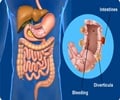Considering body fat distribution allows more individuals to benefit from obesity treatment, even if their BMI is below 30.

A new framework for the diagnosis, staging and management of obesity in adults
Go to source). Despite the wide recognition of obesity as a multifactorial, chronic, relapsing, non-communicable disease marked by an abnormal and/or excessive accumulation of body fat - in many settings, the diagnosis of obesity is still based solely on BMI cut-off values, and does not reflect the role of adipose tissue distribution and function in the severity of the disease.
‘ Did You Know?
Obesity accounts for nearly $147 billion in healthcare costs annually in the United States. #obesity #bmi ’





The EASO Steering Group, comprised of experts including current and former Association Presidents, have put together a series of statements on obesity diagnosis, staging and treatment that will move management of the condition in line with the latest scientific knowledge and developments. Obesity accounts for nearly $147 billion in healthcare costs annually in the United States. #obesity #bmi ’
The authors say: “An important novelty of our framework regards the anthropometric component of the diagnosis. The basis for this change is the recognition that BMI alone is insufficient as a diagnostic criterion, and that body fat distribution has a substantial effect on health. More specifically, the accumulation of abdominal fat is associated with an increased risk of developing cardiometabolic complications and is a stronger determinant of disease development than BMI, even in individuals with a BMI level below the standard cut-off values for obesity diagnosis (BMI of 30).”
The new framework makes explicit that abdominal (visceral) fat accumulation is an important risk factor for health deterioration, also in people with low BMI and still free of overt clinical manifestations; and the new framework includes people with lower BMI (≥25–30 kg/m2) but increased abdominal fat accumulation and the presence of any medical, functional or psychological impairments of complications in the definition of obesity, hence reducing the risk of undertreatment in this particular group of patients in comparison to the current BMI-based definition of obesity.
Expanding Obesity Treatment Eligibility
The authors make clear the pillars of treatment of people with obesity in their recommendations substantially adhere to current available guidelines.Behavioural modifications, including nutritional therapy, physical activity, stress reduction and sleep improvement, were agreed as main cornerstones of obesity management, with the possible addition of psychological therapy, obesity medications and metabolic or bariatric (surgical and endoscopic) procedures.
Advertisements
In current practice, the strict application of these evidence-based criteria precludes the use of obesity medications or metabolic/bariatric procedures in patients with a substantial burden of obesity disease but low BMI values.
Advertisements
The authors say: “This statement may also be seen as a call to pharmacological companies and regulatory authorities to use inclusion criteria that are more adherent to the clinical staging of obesity and less to traditional BMI cut-offs when designing future clinical trials with obesity medications.”
They conclude: “This statement will move obesity management closer to the management of other non-communicable chronic diseases, in which the goal is not represented by short-term intermediate outcomes, but by long-term health benefits. Defining long-term personalised therapeutic goals should inform the discussion with the patients from the beginning of the treatment, considering the stage and severity of the disease, the available therapeutic options and possible concomitant side effects and risks, patient preferences, individual drivers of obesity and possible barriers to treatment. Emphasis on the need for a long-term or life-long comprehensive treatment plan rather than short-term body weight reduction is warranted.”
Reference:
- A new framework for the diagnosis, staging and management of obesity in adults - (https://www.nature.com/articles/s41591-024-03095-3)















